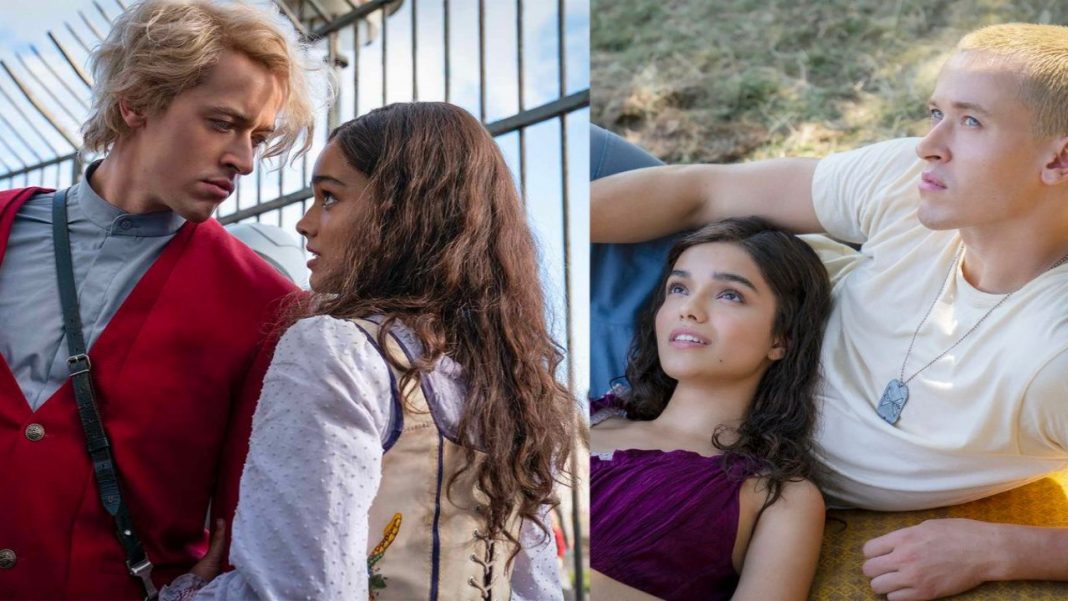Set 64 years before Katniss Everdeen’s entry into the arena, The Hunger Games The Ballad of Songbirds and Snakes dives into the the origin story of President Snow, a young student thrivnig to grow up the ranks in the aristocratic system of Panem. There enters Lucy Gray Baird, the tribute from District 12, who ties the strings of Snow’s hatred for Katniss much later in his life. Although the latest addition to the franchise, The Ballad of Songbirds and Snakes provides insight into the early days of Panem at the time of the 10th Hunger Games.
Coriolanus Snow’s steady discent into continued lust for power was effectively carved out in the film. But the loose end continues to be the fate of Lucy Gray Baird, the titular songbird. In the last act of the movie, Lucy is seen to be shot by Snow, or so he thought, never to be seen again. Does Lucy Gray die? Did she run off into the woods, as originally planned? Here is a complete analysis of what happened at the time and what the ending of the movie actually meant.
The Hunger Games The Ballad of Songbirds and Snakes Ending Explained
The final scene of the movie displays, rather than voices the words of the older President Snow, played by Donald Sutherland. The President of Panem states, ‘It’s the things we love most that destroy us.’ These are the same lines that Snow said to Katniss in The Hunger Games Mockingjay Part 1 when the rebels were inside the capital, rescuing the remaining victors including Peeta and Annie.
Stitching this scene to the past, the final scene of The Ballad of Songbirds and Snakes is that of Dean Highbottom devouring a morphling, only to result in his death. President Snow’s past, as iterated by Finnick in Mockingjay Part 1 was filled with such conspiracies. Snow was known to have used the idea of poisoning his foes to rise up the ranks. And the killing of Dean was the first step towards his rise to power.
Not only this, Highbottom was also the only loose end tying him to the murder of Sejanus Plinth. Thus, killing him was crucial to a clear path.
Lucy Gray: Where did she go?
Before Coriolanus became the man that we knew in the Hunger Games, the young boy almost decided to leave it all behind for love. He, along with Lucy Gray, fled District 12, only to find something that could break the two off once again. Lucy finds the gun that Coriolanus used to murder his friend Sejanus Plinth. She then talked her way out of the house, suggesting she would return.
Coriolanus, who has already been inflicted with the idea of betrayal, knows that Lucy might expose him. He comes out to look for her, and kill her. However, the only thing he can find is her scarf. It turns out to be a trap, as the snake emerges from it and bites Coriolanus. The next couple of shots display Snow spotting Lucy and shooting her.
![The Hunger Games The Ballad of Songbirds and Snakes [Image Credit- Color Force Studio] The Hunger Games The Ballad of Songbirds and Snakes [Image Credit- Color Force Studio]](https://www.pinkvilla.com/images/2023-11/1700579078_the-hunger-games-lucy.jpeg)
However, what could not be trusted is the effect of the poison that Coriolanus was under the influence of. It could only have been hallucinations that led Snow to shoot Lucy because her body is never found. It may have been that she dodged the bullet with the slightest wound and fled into the woods, as already planned.
All in all, one cannot say if Snow’s judgment of the scene could be trusted, owing that he was under the influence of poison.
![The Hunger Games The Ballad of Songbirds and Snakes [Image Credit- Color Force Studio] The Hunger Games The Ballad of Songbirds and Snakes [Image Credit- Color Force Studio]](https://www.pinkvilla.com/images/2023-11/1700579181_dean-highbottom.jpeg)
Why did Lucy let Snow live?
One more question that continues to complicate the dynamic of this victor and mentor is why Lucy set the trap with a non-poisonous snake. She understood that Snow killed Plinth, but she decided not to kill him. Love could be one of the reasons, explaining why she would not kill the mentor who saved her multiple times in the arena and made her the ultimate victor.
Finally, The Hunger Games: The Ballad of Songbirds and Snakes wraps up with a lot of mystery around Lucy Gray Baird’s fate. The story dives deep into Coriolanus Snow’s transformation and his complex relationship with Lucy Gray. The ending leaves us guessing whether Lucy Gray made it out alive or not, adding an extra layer of intrigue. The movie hints at potential sequels or spinoffs, keeping the door open for more adventures in the Hunger Games universe. So, buckle up for more twists and turns in Panem’s history!







